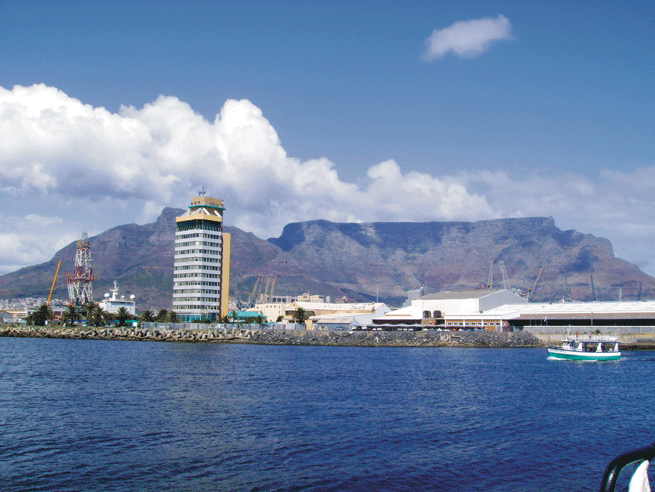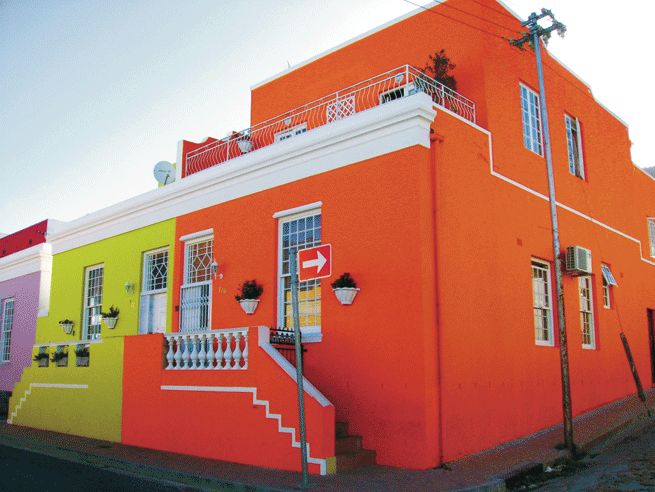
![]() Travel
Travel
South Africa Lose Your Heart In Cape Town Cape Town has a very relaxed feel about it. The pace of life is slow, and people like the outdoors.
By: Rufaida Javid As our aircraft curled around the Cape of Good Hope, crossed the fabled Table Mountain and started to descend, I remembered reading somewhere that Cape Town is arguably the most beautiful city in the world. I couldn’t have agreed more.
The city is blessed with a unique geography, interesting history and temperate climate. Here, it’s easy to forget that you are in Africa. It’s more Nice than Nairobi; more San Francisco than Soweto. Getting Around Public transport is insufficient, and there are privately driven minivans. For tourists, the best way of getting around town is the taxi, which is metered (starting at R10).
Standing 3,500 feet tall, Table Mountain, Cape Town’s most famous landmark, can be seen from almost anywhere in the city – clouds permitting. In fact, it’s only on our second day in the city that we first got to see the massive, flat lump of rock, after the clouds and the mist disappeared. The locals even have a name for the clouds that roll over the edge of the mountain – “the tablecloth”.
Getting up the mountain is the highlight of any trip to Cape Town. The view of the city from up there is fabulous. You can take the cable car or trek your way up, along a well-marked route. But don’t forget to take along a sweater or a jacket: no matter what the temperature is in the city, up there it does get chilly!
While Cape Town is much safer than some other cities in the country, like Johannesburg, it still pays to be vigilant. And like any other city in South Africa, the gap between the rich and poor here will leave you gasping for breath. In many parts of the city, you can be forgiven for thinking you are in Western Europe or California.
Though Portuguese explorer Vasco da Gama had passed the Cape of Good Hope on his way to India in 1497, the city came into being only after 1652, when Jan van Riebeeck of the Dutch East India Company established a way station here for ships going to the Dutch East Indies (present-day Indonesia) from Europe.
The Dutch brought in slave labour from their far eastern colonies, and the descendents of those slaves today are collectively known as Cape Malays. They consituted the earliest Muslim community in South Africa and have retained their distintive culture. Almost all of them speak Africana, their mother tongue.
Today, the Bo-Kaap (Upper Cape) neighbourhood of Cape Town is one of the most-visited districts in the city. All it’s residents are Cape Malays. The distinctive feature of this area are the rows upon rows of beautiful, brightly painted houses and mosques. One resident told me that they repaint their house in a new, bright colour every Ramadan. While you are here, don’t forget to check out the Bo-Kaap Museum on Wale Street. The museum is a house that belonged to a prominent Muslim family in the area. It gives an interesting insight into the lives and the history of the Cape Malay community in South Africa.
If you speak English, you will have absolutely no problem here as everyone speaks English, though the most spoken language in Cape Town is Afrikaans. Coloured people account for almost half the city’s population (48%), with blacks (31%), whites (19%) and Indians (2%) accounting for the rest.
The tourist heart of Cape Town is the Victoria and Alfred Waterfront. It is a massive complex, with an ultra-modern shopping mall, hotels, cinemas and restaurants catering to every taste. The restaurants at the waterfront are over-priced, though, and you will be hard-pressed to find any that serve halal food. In the shopping mall, however, there are a number of Cape Malay, Indian and Moroccan restaurants that serve excellent halal food. Try out a mouth-watering dish unique to Cape Malays: bobotie (curried beef with eggs).
The V&A waterfront is also the place from where two ferries carrying tourists to Robben Island depart at regular intervals. Robben Island has been a penal colony throughout its 400 years of existence. And it was here that the world’s most famous prisoner, Nelson Mandela, was held for 18 years. Don’t even think of skipping this trip.
Interestingly, the two ferries that take tourists to Robben Island are the same two ferries the Aparthied government used to transfer political prisoners to the isla nd. Tickets can be bought from Robben Island Museum at the V&A waterfront and cost R150 (approximately SR75), which includes the scenic 45-minute ride to the island, a bus tour of the island itself and a guided tour by ex-prisoners of the jail, including the cell where Mandela was held. Demand for tickets is always high, so book in advance.
nd. Tickets can be bought from Robben Island Museum at the V&A waterfront and cost R150 (approximately SR75), which includes the scenic 45-minute ride to the island, a bus tour of the island itself and a guided tour by ex-prisoners of the jail, including the cell where Mandela was held. Demand for tickets is always high, so book in advance.
Take a drive to the Cape of Good Hope, the “most southwestern tip of the African continent” as a sign informs you. There are others signs too: “Don’t feed the baboons”. “Don’t feed the ostriches”. Our guide informed us that zipping around in convertible cars in this area can be dangerous: there is a serious threat of “baboon-jacking”! Apparently, the creatures assemble into the vehicle and make it their home if you leave it untended for a while.
Also take time out to visit the beautiful Kistenbosch Botanical Gardens. And whatever you do, don’t forget to drive down to Foxy Beach where an amazing spectacle awaits your astonished gaze: penguins as far as the eye can see!
Cape Town has a very relaxed feel about it. The pace of life is slow, and people like the outdoors. The city is served by an excellent network of motorways (almost as good as those in the Kingdom).
There are excellent hotels in Cape Town. We stayed at the 4-star Ritz Hotel (R600).